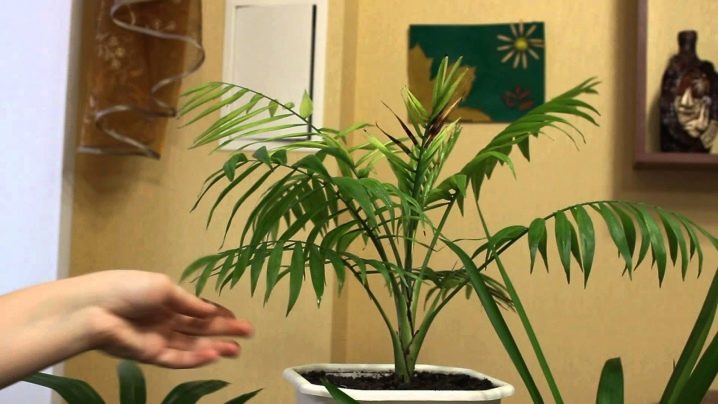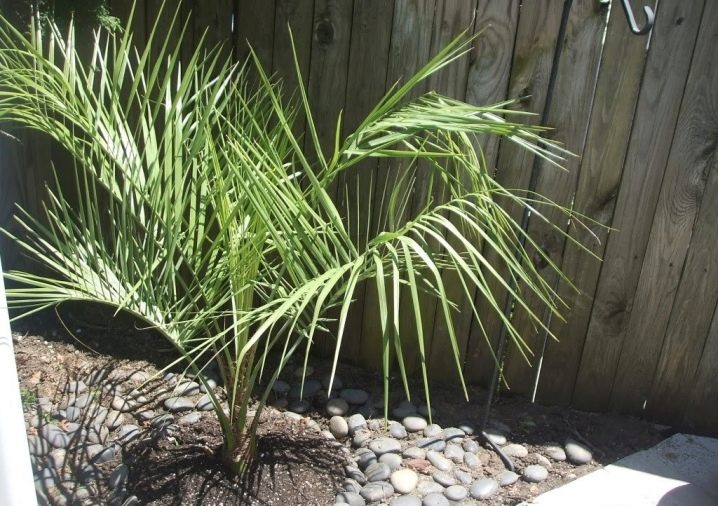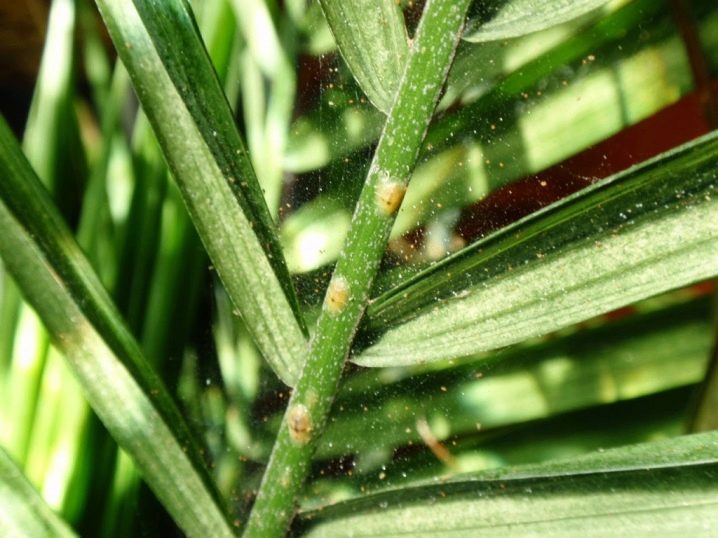All about the areca plant

Even taking into account the fact that the tropical palm is not an inhabitant of the middle latitudes, some of its varieties can still be cultivated indoors. Taking into account the uniqueness of the plant, many try to learn everything about the exotic areca. It is worth noting that the demand for such unusual specimens is growing at a record pace. At the same time, a real Tropicana appeared in our harsh climate solely thanks to the efforts of specialists and experienced florists who managed to adapt several decorative varieties to current conditions.

What it is?
Areca palm will be one of the best and guaranteed original solutions for those who have conceived to create a corner of the real tropics in the room. The domesticated variety of the plant has retained all the key features, and most importantly, its exotic appearance. It is important to note that this type of decorative palm is beneficial.
Its leaves effectively neutralize up to 85% of air pollutants. And in this case we are talking about carbon monoxide and other potentially dangerous toxins.

The homeland of a unique representative of the flora is South and Southeast Asia. The palm tree is widespread in the southern territory of the Middle Kingdom, as well as in Oceania and East Africa. The genus to which the described culture belongs includes several dozen species. Moreover, it is the Areca that is one of its largest representatives. These palms can be found in the moist, tropical regions of Asia. These are territories from the Philippines, New Guinea and the Solomon Islands to India and Sri Lanka.

It is noteworthy that Areca is grown throughout the tropical zone and is actively used in veterinary medicine... The fact is that it has a laxative effect, and therefore is an effective means of fighting worms in ungulates. In addition, the plant is able to significantly relieve pain in rheumatism. It is important to mention that arecoline lowers intraocular pressure, which allows it to be used as an official medicine.
The palm trees in question are dwarf, growing no higher than 0.4 meters, and real giants, reaching a height of 20 m or more.

The thin stem is covered with annular scars. The foliage of the palm tree is quite dense, and the leaf plates themselves resemble bright green feathers. Below the crown, white inflorescences are formed in the form of cobs about a meter in size.
Areca fruits are reddish-yellow, egg-shaped drupes. Another important feature of culture is record-breaking growth. The plant is able to reach its maximum development in just 3-4 years. Some similarities between certain types of areca can be confusing for novice gardeners. Sometimes it is quite difficult at first glance to find the differences between chrysalidocarpus and, for example, chamedorea. The difference lies in the number of leaf segments, the shape of the inflorescences and, most importantly, in the height of the plants.

Views
Despite the variety of varieties of the areca palm, only a few of them are successfully grown as interior elements, that is, indoors. It is worth paying attention to the following types of these unique plants.
- Three-stalked areca. Her homeland is the Malacca Peninsula. Such palms grow up to 3 meters in height and have several trunks with ring-shaped scars. The leaves reach 1.5 meters, and the flowers are white and smell good.It is important to consider that this type of culture prefers warm rooms.


- Areca catechu, also called Bethel palm. Representatives of this species can reach a height of 25 meters, and feathery leaves grow up to 1.8 meters. Inflorescences of white flowers up to 60 cm long are formed in the leaf axils. The fruits contain seeds that have a red-yellow color.


- Madagascar chrysalidocarpus. This palm tree takes root well in greenhouses and conservatories. The high decorativeness of the species is provided by feathery leaf plates with a glossy surface, as well as flowers that have a golden color.

- Chrysalidocarpus (Dipsis) lutescens (yellowish). It is this variety that is today the most popular and adapted for full-fledged breeding at home. One of the main distinguishing features is a very aesthetic arch-shaped crown and branched inflorescences, consisting of small yellow flowers. The leaves of adults reach more than a meter in length, and their segments are 30x3 cm in size.

Taking into account the key features of the considered representative of the tropical flora, it is worth noting that in apartments, houses and offices, Dipsis blooms extremely rarely.
Under favorable conditions indoors, the palm tree will be able to please the owners with small yellow flowers, which are grouped in panicles.
It is also important not to forget that both inflorescences and areca fruits have poisonous properties.

Care
Before you start Areca Dipsis at home, you should study the requirements for the conditions of detention, and learn how to properly care for such a palm tree. It is important to consider that we are talking about a rather whimsical plant that requires:
-
good lighting;
-
enough free space;
-
comfortable temperature;
-
complete absence of drafts.

After purchasing an Areca in a store where she was most likely in low light conditions, you will need to gradually accustom her to the sun's rays. Otherwise, it will be difficult to avoid dangerous burns.
Initially, Dipsis can be left in a transport container (pots) with an appropriate soil mixture. This will allow the plant to adapt to new indoor conditions without much stress. In the future, you will need to choose a pot that is suitable in size or even a tub where you can transplant a palm tree.

The main thing is not to place chrysalidocarpus in the immediate vicinity of heating devices. This will lead to the fact that its leaves begin to actively dry and turn yellow.
The next important point is the correct composition of the soil. For the considered representative of the flora of the tropics, a mixture will be suitable, which includes:
-
humus leaf - 2 parts;
-
perlite - 2 parts;
-
sod land - 1 part.



The best option is to use ready-made soil, which is designed specifically for planting palm trees. It is worth focusing on the perlite content, which is responsible for creating an effective drainage layer. In parallel, the soil mixture should be neutral or slightly acidic.
In the spring-summer period, Dipsis requires top dressing at intervals of two weeks. Experienced gardeners prefer to use complex fertilizers for this.
In autumn and winter, the plant is fed no more than once a month.

As already noted, areca is very sensitive to temperature conditions. And here it is important to remember that culture does not need peace in winter, and, therefore, it will need to create the same conditions as in summer. So, throughout the year, the optimal thermometer readings will be 22-25 degrees. Young animals are much more sensitive to climate change and, in particular, to temperature fluctuations.
In addition to all of the above, it is necessary to take into account the features of the following agrotechnical measures.

Watering
Areca palm is as sensitive to irrigation as possible, so it is highly undesirable to overdry the soil in the tub, or excessively moisten it. In the second case, with a high probability, the roots of the plant will begin to rot, and it will inevitably get sick.
With insufficient watering, the leaf plates begin to turn yellow quickly, which leads to the palm tree losing its aesthetics and all its decorative qualities.
For proper irrigation, it will be necessary to learn how to control and assess the condition of the upper layer of the soil, preventing it from drying out more than 2.5-4 cm in depth.

Lighting
In its natural habitat, Chrysalidocarpus does not lack bright sunlight. Similar conditions will have to be provided for indoor cultivation. The window sills on the east and west sides would be ideal. If you had to place the areca on the southern window, then on especially hot and sunny days it will need to be shaded, protecting it from direct ultraviolet rays from 11 to 15 hours. It is also recommended to turn the container with a flower half a turn twice a month, that is, 180 degrees, which contributes to the even development of the palm tree.

Humidity
Taking into account the fact that we are talking about an inhabitant of the tropics, the room should have a sufficiently high air humidity. In order to create the most comfortable conditions, the palm tree is regularly sprayed with filtered water. Dryness can have an extremely negative effect on the health of the plant, as well as on its appearance.

Particular attention should be paid to the Dipsis transplant. Here it is important to ensure the safety of the earthen lump when transferring to a container with a larger volume... This is due to the requirement of the plant's increased sensitivity to exposure of the root system. Young individuals will need to be replanted every year, correctly selecting the size of the new tub, which should slightly exceed the parameters of the previous one.
The adult palm apartment is renovated every three years. If you transplant it at a shorter interval, you can impair the development of the plant.

When caring for large and elderly specimens, there is no need to carry out the described activities. In such cases, the renewal of the top layer of soil mixture in a pot or tub will be quite sufficient.
Areca replanting is best in April or May. The main thing is to use a suitable soil with the required acidity level. Taking into account all the features and capriciousness of the plant, many gardeners prefer ready-made substrates. Another key point is that when changing tubs, Dipsys must be placed in the soil at the same depth. Excessive deepening is a gross mistake that beginners often make.

When carrying out the transshipment of chrysalidocarpus into a container of a larger volume, all actions should be performed with the utmost care.
As already noted, it is highly undesirable to expose the roots of the palm tree. If this could not be avoided, then it will be necessary to remove the lower sheet plates, which will significantly reduce the evaporation of moisture. This approach will help Dipsis quickly settle down in a new place.

Reproduction
Initially, it should be noted that the described plant does not propagate by cuttings. Gardeners use the seed method or dividing the bush. The optimal time for the propagation of an ornamental palm is spring and early summer. It is worth clarifying that the vegetative method used when layering appears is more laborious. It is important to take into account that, as a rule, the branches have crooked trunks, on the basis of which, in most cases, a choice is made in favor of an alternative option.

Seeds
This method of breeding areca involves the following steps.
-
Before sowing, the planting material is placed in a sulfuric acid solution for about 10 minutes.
-
The seeds are thoroughly washed with running water.
-
Each seed is planted separately in a glass or other small container, 2/3 filled with a special soil mixture for seedlings, deepening by 2 cm.
-
The planting is covered with a transparent film or glass, and placed in a room with good lighting at a temperature of 27 to 30 degrees.

If all the rules are observed, in about 1.5-2 months you will be able to see the first shoots of future seedlings. It should be borne in mind that at temperatures below the specified, this stage will require a lot of time.
As soon as several leaves are formed in the shoot, it is transferred to pots.
It is important to remember that young animals require regular (once a quarter) additional fertilizing in the form of mineral complexes at the rate of 5 grams per unit.

By shoots
It is necessary to focus on the fact that this method is relevant only for bushes with several trunks. The procedure itself is as follows.
-
The plant is removed from the pot.
-
The root system is completely freed from the soil. First, the palm is shaken, and the rest of the earth is removed by hand.
-
The bush is divided into several segments, having previously prepared containers for them. A prerequisite is the presence of a drainage layer and a sterile substrate in new pots.
-
Delenki are planted.
-
The plantings are abundantly moisturized and placed in a location that must be effectively protected from drafts and direct UV rays.

It is important to take care of providing favorable conditions for the development of divisions. The air temperature should vary between 20 and 25 degrees.
An equally important point is high humidity. If you do everything correctly, and do not make serious mistakes at all stages, then the rooting of the separated segments will occur within two weeks.
The next step is to add mineral preparations. In this case, half of the recommended instruction rate is used.

Diseases and pests
One of the indisputable advantages of the Areca is that these palms rarely become infected with viral and bacterial diseases. In the vast majority of cases, improper care becomes the source of problems. For example, root rot is, as a rule, the consequences of regular waterlogging of the soil. In such cases, the plant will signal the presence of a disease as follows:
-
the appearance of brown spots on the leaf plates;
-
decay of some areas.

At the same time, it is important to take the right measures in a timely manner, until the affected areas have increased, covering all the leaves.
Normalization of the irrigation regime will help to avoid troubles and eliminate the consequences of errors. In parallel, the plant is treated with fungicides.
If the leaves of a palm tree dry and turn yellow, then with a high probability it suffers from a lack of moisture. Light dried spots are a strong sign of burns caused by direct sunlight. You can cope with the problem by moving the pet to a safe place.

In a plant suffering from cold, the leaf plates begin to darken and wither. The tips of the foliage will dry out from excessively dry air. The optimal solution in the first case would be to change the place where the palm tree grows. And it is also highly recommended to periodically spray the areca, it will also not be superfluous to place a container with water next to it, which will provide a sufficient level of humidity. It is worth remembering that the appearance of a brown tint on the lower plates is not a sign of illness, but indicates their aging and impending fall.
Chrysalidocarpus quite successfully resists pest attacks. However, it is recommended to constantly monitor the plant and respond in a timely manner to the appearance of insects.

When growing palms, one has to deal with the following parasites.
-
Mealybug, leaving a fluffy coating of white. This pest lives on the nutrients of the attacked plant. The methods of struggle in this case will be traditional.You will need to collect all the uninvited guests using wet alcohol wipes. Then the palm is treated with insecticide solutions.

- Spider mite starting his harmful activity almost imperceptibly. Here it is important to regularly inspect the plant, namely: the lower surface of the leaf plates. If the presence of mites is found, then you will need to thoroughly rinse the foliage with soapy water, and carry out an insecticide treatment.

-
Shield, the appearance of which will be evidenced by the appearance on the leaves (most often closer to the axils) of the areca of small brown or yellowish specks. In such cases, it is required to promptly collect all pests, while simultaneously removing all affected leaf plates. After that, several treatments with insecticides are carried out with an interval of 4-5 days.

- Whitefly, giving out its presence with small flutters, as well as the formation of characteristic yellow spots on the foliage. To prevent the most negative consequences of all insects, it will be necessary to collect, and then treat the plant with "Fitoverm" or "Akarin".

Of course, it makes no sense to dispute the effectiveness of modern drugs. However, in fairness, it is worth paying attention to folk remedies for combating various pests. On the one hand, they are not so fast-acting, but at the same time, they do not pose a potential danger to human health and life.
So, the infusion of yarrow effectively helps to fight the scale insect and whitefly. For its preparation, it is necessary to fill in a liter of water with 80 grams of chopped and dried grass, which was collected during the flowering period.

The resulting mixture is boiled for half an hour, and before use (spraying the plants) it is diluted with water.
Another effective folk remedy is garlic infusion. It allows you to quickly get rid of such harmful insects as the worm, whitefly and scale insects. You will need to pour a head of garlic with 1 liter of boiling water, and leave to infuse for a week. In order to prepare a spray solution afterwards, you only need to dilute 50 ml of the mixture with 10 liters of pure water.




































































The comment was sent successfully.